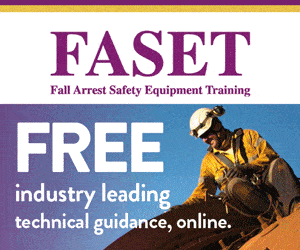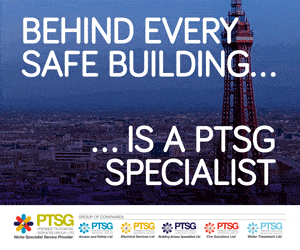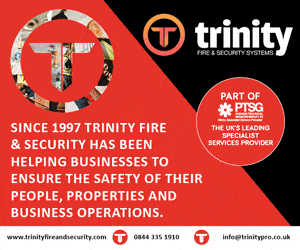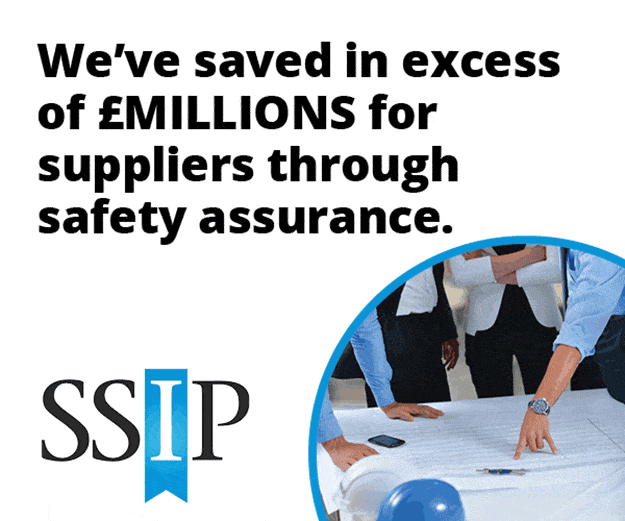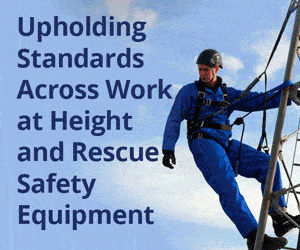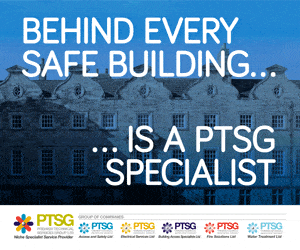By Tracy Gregory, General Manager – Fire Consultancy Division, PTSG
With over three decades in the fire industry, Leeds-born Tracy Gregory brings a wealth of practical experience to fire safety. From navigating a male-dominated industry to transforming businesses and earning industry recognition for advancing women in fire safety, Tracy’s journey reflects her commitment to meaningful safety practices. Now heading PTSG’s newly launched Fire Consultancy division, she shares insights on why the company has created this specialised service and her vision for a more human-centred approach to fire risk assessment.
Throughout my 32 years in the fire industry, I’ve noticed something: fire risk assessments often focus more on documentation than on genuine safety outcomes.
This observation is what inspired PTSG to establish its new Fire Consultancy division, which I’m proud to lead alongside Steven Doherty, Managing Director of Neo. We recognised a gap in the market for truly independent, expert-led fire risk assessments that prioritise people’s safety over paperwork. Our launch comes at a critical time, as building owners navigate increasingly complex fire safety regulations following Grenfell and the Building Safety Act.
I’ve dedicated my career to changing the industry’s approach to fire safety. After witnessing the aftermath of preventable fires and seeing the profound human impact, I believe we need to refocus on what truly matters – protecting people and properties through thoughtful, expert assessment.
My journey in fire safety
When I started in the fire industry three decades ago, the landscape looked quite different. At industry events, I would often find myself the only woman in a room full of men.
That experience gave me perspective on the value of diverse viewpoints in safety, something I carried into my work transforming a fire risk assessment business from traditional paper methods to digital tools.
What drove me wasn’t just business success, but knowing we were identifying critical safety issues that might otherwise have been missed.
The real-world consequences
Many building managers haven’t personally witnessed the aftermath of a fire situation. I have, and it changes your perspective forever.
I remember when we had a fire in our offices back in 2005 just as the new legislation was released, I was the one who put the fire out using a fire extinguisher but what happened around me was not what it should have been. When I reported my observations, the business went “back to basics” starting with a fresh Fire Risk Assessment and as they worked through the findings, were able to put in place what should have been in place at the time of the fire. We were lucky that the situation did not escalate that day, as I have been made aware of many situations over the years where companies have not adhered to the requirements of the legislation by way of having a fire risk assessment in place or by failing to ensure that the recommended actions and changes noted in the report were put in place, this subsequently led to them not being paid out via their insurance company and therefore not being able to set their business up again after the event.
I believe that thorough fire risk assessments and action being taken on the back of the same can prevent potential tragedies. One assessor noticed that a care home’s evacuation procedure relied on using lifts during emergencies, a potentially dangerous oversight which could have led to a critical situation. This wasn’t something a standardised checklist would catch but documenting the findings and suggested solution within the report for the customer to then address, is what a fire risk assessment was put in place to achieve. These experiences remind us that fire safety isn’t abstract it has real consequences for real people.
The importance of qualified assessment
One area where I’m particularly passionate is ensuring fire risk assessments are carried out by qualified professionals and for them to be able to be classed as “competent”.
A recent government survey found only 46% of fire risk assessors are formally certified or registered by a scheme. This creates significant variation in assessment quality and thoroughness.
When I look for assessors to join our team, I seek specific qualifications: membership in the Institute of Fire Safety Managers or Institute of Fire Engineers. They often have a background in The Fire and Rescue Service where they’ve directly encountered fire behaviour and some have also carried out investigations after an event.
“A health and safety background alone doesn’t provide the specialised knowledge needed to be able to carry out a comprehensive fire risk assessment,” I often explain to clients. “Fire safety requires specific expertise and experience to identify potential hazards that might not be obvious to someone with general safety training.”
This isn’t about credentials for their own sake – it’s about having the right expertise to spot subtle issues before they escalate.
Independence and objectivity
Another area where I believe our industry can improve is maintaining clear independence between assessment and remediation.
Many fire service companies combine these functions, which can inadvertently create a situation where assessments identify issues that the same company then offers to resolve. While convenient, this approach can raise questions about objectivity.
At PTSG, we’ve structured our new Fire Consultancy division to address this concern. Our assessors function as independent third parties focused solely on accurate evaluation. As I explain to our team: “Your job is to report objectively on what you see. Your professional reputation depends on getting it right.”
If issues are identified, PTSG can certainly help address them through our other service divisions —particularly around fire doors and compartmentation, which are common findings. However, this is always presented as the client’s choice rather than a foregone conclusion.
This approach gives our clients confidence in the integrity of our assessments while still offering the convenience of integrated solutions if desired.
Patterns in fire safety
After seeing thousands of reports across various building types, clear patterns emerge.
Five issues consistently appear in assessments:
- Fire door issues – gaps, damaged closers, missing intumescent strips
- Compartmentation weaknesses – openings where pipes and cables pass through walls
- Inadequate or incorrect signage
- Staff with insufficient fire safety training
- Unsuitable extinguisher placement
The digital transformation
One of the most promising developments I’ve been fortunate to be part of is the digitisation of fire safety information.
At PTSG, we use the BORIS system to create the fire risk assessment report. We provide this to the customer in “electronic” format where they can look at the report “by site” (if a single site customer) or where they have multiple buildings/sites, they can start to manipulate the system to look at the issues in many different ways. They can look at the risk “type” across their estate, for example look at all the sites which have fire door issues, or they can look at the risk severity across their estate e.g. they could address the “very high” risk issues across their estate as a priority. The functionality has been built to aid the customer in addressing the issues which have been noted in an adaptable way which will save them time and effort having to go through manual reports by site and correlate the issues noted within each one.
Different settings, different needs
Throughout my career, I’ve worked across diverse sectors, each with unique fire safety considerations:
Social housing balances resident independence with safety oversight and often includes vulnerable residents with specific needs. Schools, Colleges and Universities typically work around academic calendars, scheduling maintenance and reporting requirements to be carried out during holiday periods when buildings have reduced occupancy. Hospitality venues need approaches that maintain guest experience while ensuring 24/7 safety in sleeping environments. Healthcare facilities face the complex challenge of protecting patients who may need assistance evacuating. An Effective fire risk assessment report will recognise the operational requirements of the site and the assessor will provide practical solutions for the customer to follow in order to improve their fire safety on site.
Moving forward together
As our industry evolves, I encourage building owners and managers to consider three questions about their fire safety approach:
- Does your fire risk assessor bring with them specific fire safety qualifications and relevant experience for their role?
- Is there clear independence between your fire risk assessment and remediation recommendations?
- Is your fire safety information thoroughly documented, accessible, and regularly updated?
Fire risk assessment isn’t just about compliance, it’s about creating genuinely safer environments for the people who use your buildings. By focusing on expertise, independence and comprehensive documentation, we can work together to enhance safety outcomes that truly matter.
Tracy Gregory leads PTSG’s new Fire Consultancy division, launching on 1 August 2025, which provides independent fire risk assessments conducted by highly qualified professionals. The Leeds-born industry veteran has over 32 years of experience in fire safety and has been recognised with industry awards for her contributions to advancing women in the fire sector.











